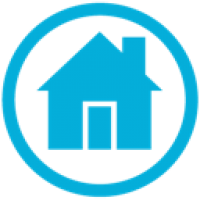Cost of surveillance includes each of the resources required to operate the surveillance system, like for instance: time, personnel, financial input and equipment. Please refer to the Cost-analysis tool from the Evaluation wikispace for more information.
.
| | Surveillance design step | Advice for improvement of COST |
| 1 | Surveillance system | |
| 1.1 | Hazard | |
| 1.2 | Surv. Objective | |
| 1.3 | Geographical area covered | |
| 1.4 | Susceptible species | |
| 1.5 | Risk characteristics | |
| 2 | Components overview | |
| 3 | Target population | |
| 3.1 | Target species | |
| 3.2 | Target sector | |
| 3.3 | Sectors missed | |
| 3.4 | Geographical area covered | |
| 3.5 | Target criteria | |
| 3.6 | Percentage covered | |
| 4 | Disease suspicion | |
| 4.1 | Definition | |
| 4.2 | Obligations | |
| 4.3 | Notification procedures | |
| 4.4 | Actions upon suspicions | |
| 4.5 | Actions upon confirmation | |
| 5 | Enhancements | |
| 6 | Testing protocol | |
| 6.1 | Type of test to be carried out | |
| 6.2 | Type of sample to be collected | |
| 6.3 | Pooling | Pooling samples, either at the point of collection or in the laboratory can reduce costs. |
| 6.4 | Screening/first test | |
| 6.5 | Confirmatory/ second test | |
| 6.6 | Further details | |
| 7 | Study design | |
| 7.1 | Point of sample collection | The point at which samples are collected can influence the cost. For example collection samples at a collection point may be less costly than visiting individual farms. |
| 7.2 | Selection of units | A well designed sample can provide equally good results but at lower cost |
| 7.3 | Target unit | |
| 7.4 | Sampling unit | |
| 7.5 | Sampling design | |
| 7.6 | Number of units in the target population | |
| 7.7 | Sensitivity of the testing protocol | |
| 7.8 | Specificity of the testing protocol | |
| 8 | Sampling strategy | |
| 8.1 | Sampling at the primary sampling unit (PSU) level: | |
| 8.2 | Sampling at the secondary sampling unit (SSU) level: | |
| 8.3 | Selection criteria WITHIN the population | |
| 8.4 | Risk-based allocation | Risk-based surveillance may be more cost effective by reducing the amount of sampling by targeting only those areas/groups/times at higher risk. |
| 8.5 | Sample size calculation | |
| 8.6 | Sample allocation at the primary level | |
| 8.7 | Sample allocation at the Secondary level | |
| 8.8 | Sample collection timeline | |
| 9 | Data Generation/ Sampling collection process | |
| 9.1 | WHO will collect the samples? | More qualified staff will cost more to engage. |
| 9.2 | HOW will samples be collected? | More time-consuming sampling approaches will influence labour cost. |
| 9.3 | WHEN/HOW OFTEN will samples be collected? | More frequent sampling approaches will influence labour and test costs. |
| 9.4 | Training | Training will influence costs (increase at first, but may save money later!). |
| 9.5 | Follow-up | Good follow up will help to keep costs under control. |
| 10 | Transfer means | |
| 10.1 | HOW will samples be transferred? | The choice of how samples or data are transferred may be very influential on the costs. |
| 10.2 | WHEN/HOW OFTEN will samples be collected? | The choice of how often samples or data are transferred may be very influential on the costs ⇒ usually more often, higher costs. |
| 10.3 | Training | |
| 11 | Data Translation/ sample analyses process | |
| 11.1 | WHO will perform the analyses? | |
| 11.2 | HOW will samples be analysed | |
| 11.3 | WHEN/HOW OFTEN will samples be collected? | Batch or fixed schedule testing may help keep costs low particularly where automated batch testing can be used. Consult the laboratory to discuss. |
| 11.4 | Expected LOAD | |
| 11.5 | Training | Training can be costly. Methods such as the production of guidelines or manuals or on-line training may be as effective and cheaper than holding attended training courses. |
| 11.6 | Follow-up | |
| 12 | Epidemiological analyses | |
| 12.1 | Are there any epidemiological DATA that need to be collected? | |
| 12.2 | WHO will perform the analyses? | |
| 12.3 | HOW will epidemiological analyses be performed? | |
| 12.4 | WHEN/HOW OFTEN? | |
| 12.5 | Training | Using on the job or on-line training where appropriate can reduce costs. |
| 12.6 | Data management needs | |
| 12.7 | Software needs | |
| 13 | Dissemination of results | |
| 13.1 | WHO will disseminate the results? | |
| 13.2 | WHO is the TARGET of dissemination? | |
| 13.3 | HOW will results be disseminated? | |
| 13.4 | WHEN/HOW OFTEN? | |
| 14 | Surveillance review | |
| 14.1 | Who | |
| 14.2 | When | |
| 14.3 | How often | |
You could leave a comment if you were logged in.









